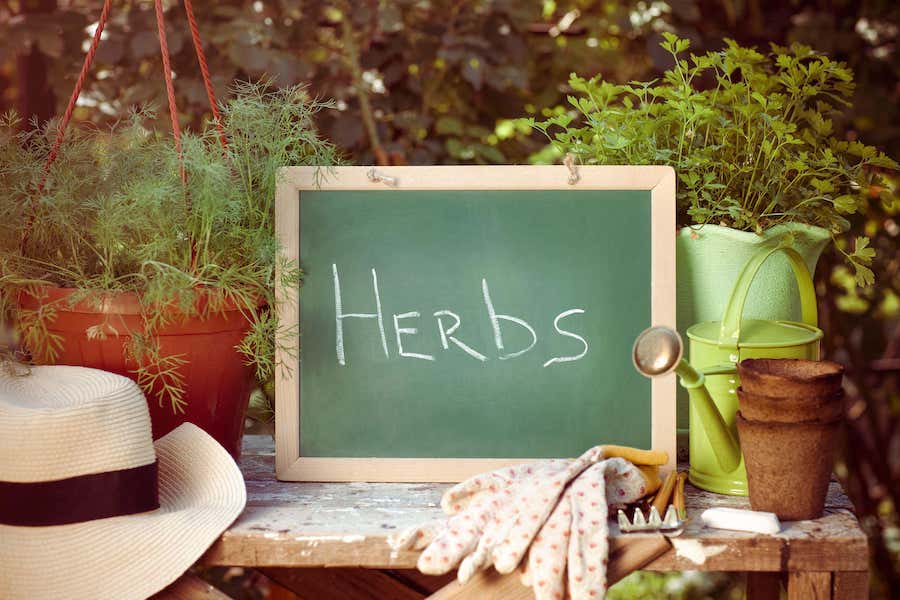How to create a kitchen herb garden
You could soon be adding fragrant herbs to your dishes with these 7 top tips
Want some mint in your mojito, torn basil leaves on your tomato salad or a sprinkling of coriander on your curry?
There are so many versatile herbs which are easy to grow, but can make all the difference to the flavour of your cooking.
Renowned herb specialist, designer and author Jekka McVicar, who runs a herb farm in south Gloucestershire and has helped Riverstone, luxury London retirement residences, curate dedicated herb gardens, says: “There is nothing more enjoyable than being in a herb garden, nurturing your plants, watching them grow and seeing the pollinators they attract.”
She has come up with these top tips on how to create your own kitchen herb garden.
1. Handpick your perfect herbs

“My top tip is to grow what you will use. You can also consider popular choices such as basil, parsley, thyme, coriander, wild rocket, chives and oregano. These versatile herbs will complement a wide range of dishes and bring an extra touch of freshness to your cooking. They work well planted in a garden, raised bed or in pots on a windowsill.”
2. Nurture with the right conditions
“Understanding the specific needs of your herbs is a must for their growth. You should always grow herbs replicating the conditions from where they come from.
“Although herbs are from all around the world, most of the culinary herbs we use today come from the Mediterranean and the Middle East, and grow best with full sun, in a sheltered location with light, well-drained, moisture-retentive, fertile soil with plenty of organic matter incorporated.”
3. Root drainage is key

“If you are growing in pots, to prevent waterlogged soil and root rot, ensure your pots or containers have adequate drainage holes at the bottom. You can add some stones or bits of broken pots to the bottom of the pot to ensure the drainage hole does not become blocked.
“By allowing excess water to escape, you promote healthy root development. I’d also recommend placing your herbs on a tray to stop your worktops getting dirty. For both pots and herb beds, you can also add horticultural grit to your compost to promote drainage.”
4. Water with care

“The most important point with watering is not to overwater because you can add water, but never take it away. Here at the herb farm we always water in the morning before lunch so that the herbs go to bed dry. This is important when growing herbs inside as excessive moisture will cause ‘damping off’, a fungal infection, and mildew.”
5. Feed consistently
“While herbs generally don’t require a lot of food they cannot just live off love and water. A little nourishment can go a long way. I recommend using a high-quality potting compost that is peat free and naturally rich in the food your plants need. Fresh compost has about six weeks of food. Therefore, I’d suggest feeding on Fridays during the growing season with an organic liquid seaweed fertiliser.”
6. Prune for growth

“Pinch off the tips, from the top, to a growing node (where new leaves are shooting), particularly for herbs from the Lamiaceae family, like basil, mint and oregano. Through prudent pruning, you’ll stimulate your herbs to flourish, bush out and result in a fuller harvest.”
7. Collect your harvest
“When enjoying the fruits of your labour, remember to harvest your herbs with care and precision. Similar to pruning, harvest toGrfowio a growing node to promote further growth. Avoid harvesting more than a third of the plant at once, as this can stress the herb. By harvesting properly, you’ll enjoy a continuous supply of fresh, aromatic herbs throughout the growing season.”
The Press Association
Latest posts by The Press Association (see all)
- Dame Kelly Holmes: ‘Getting old is a privilege but ageing I don’t like’ - April 27, 2024
- 9 of the most iconic dance scenes in movies - April 27, 2024
- Why is melanoma on the rise? As new personalised ‘gamechanger’ skin cancer jab is tested - April 27, 2024
- King to resume public duties after positive cancer treatment - April 26, 2024
- 3 recipes to make from the new Hairy Bikers cookbook - April 26, 2024





















